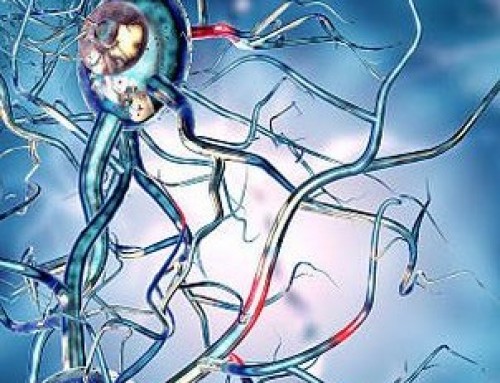Alzheimer’s Disease
 Alzheimer’s disease (AD) is the most common cause of dementia and those impacted by the disease know the toll it can take on their family. Typical symptoms include forgetfulness and difficulty communicating. These symptoms eventually increase and even expand to include confusion and severe memory loss.
Alzheimer’s disease (AD) is the most common cause of dementia and those impacted by the disease know the toll it can take on their family. Typical symptoms include forgetfulness and difficulty communicating. These symptoms eventually increase and even expand to include confusion and severe memory loss.
While family members can clearly see the effects from Alzheimer’s disease in the eyes of their loved ones, researchers are still unclear on what causes it.
Doctors are able to see that patients who have been diagnosed with AD experience a number of differences from people not impacted by the disease. Namely, the features observed include the following:
- Amyloid-beta (Aß) protein plaques that build up over time and attach to brain cells.
- Fibrous proteins that gather within individual neurons.
- Tau protein toxicity is common in patients with neurodegenerative diseases.
All people have the Aß proteins referenced above. Patients with Alzheimer’s are unique in that the proteins accumulate in specific regions of the brain. The accumulation of these proteins is what eventually leads to the symptoms of memory loss and problems in communication.
The Cause
Researchers simply do not know what causes this disease. A key challenge is evaluating brain tissue in patients. Scientists have been unable to observe neural behavior and development up close and over time, because of problems analyzing live patients at the cellular level.
While hypothesis and theories exist about the cause of the disease, no hardened evidence has been produced. It is the lack of progress on the front-end that makes treatment or even a cure more challenging on the back end.
Alzheimer’s Disease by the Numbers
According to the Alzheimer’s Association, there are approximately 5.4 million Americans living with the disease with 96% of those people being 65 or older. Further, up to one third of senior citizens die with Alzheimer’s or some other form of dementia. The aging baby boomer population has projections for Alzheimer’s growing to nearly 14 million people by the year 2050.
Once a patient is diagnosed with Alzheimer’s disease, mortality rates increase substantially. Specifically, patients diagnosed by the age of 70 are twice as likely to pass before they reach their 80th birthday. This mortality rate is double that of individuals not diagnosed with the disease.
Impact on Family Members & Caregivers
Family members and personal caregivers account for over 18 billion hours of unpaid care at a value of over $200 billion. Statistics provided by the Alzheimer’s Association show that the impact to family members typically results in a loss of over $15,000 in annual income due to the demands. They further itemize the financial impact from providing care to these patients:
- Healthcare costs for these patients are projected to reach $236 billion in 2016.
- Only about half of the financial expense is covered by Medicare or Medicaid programs.
- Alzheimer’s and other dementias account for approximately 20% of all Medicare spending. That figure is projected to reach 33% by 2050.
“Eventually, Alzheimer’s kills, but not before it takes everything away from you.” —Alzheimer’s Association

Alzheimer’s Disease Treatment
There is no current cure for this disease. Instead, treatment programs target symptomtomatic challenges experienced by patients. Those treatments target everything from memory loss, challenges sleeping, and even behavioral changes.
None of the treatments are able to halt the advancement of AD; however, they are able to curb the affect it has on people that have been diagnosed with the disease.
Stem Cell Research Advancing Alzheimer’s Treatment Potential
Progress has been difficult over the decades that Alzheimer’s disease has been researched; however, advances in stem cell research are opening new doors. Earlier, we discussed that the ability to directly observe neural behavior has been difficult because of problems analyzing live patients at the cellular level. Advances in stem cell research and technology are opening doors to researchers previously unavailable.
Stem Cell Case Study # 1:
Doctor Koorosh Shahpasand, PhD, of the Royan Institute for Stem Cell Biology and Technology is leading a team. His team is using stem cell technology to replicate the brain cells of diagnosed patients in order to directly observe and analyze the impact that tau protein toxicity has on the cell behavior.
This team is evaluating tau protein toxicity in affected patients. The protein becomes modified in patients with Alzheimer’s into a new form called “cis P-tau.” The presence of this modified form of protein has been identified as an indicator of early onset forms of the disease.
Understanding the protein toxicity may provide future researchers a new mechanism to treat the disease.
The Harvard Stem Cell Institute is building upon the work from Shahpasand et al. Their focus will be to use induced pluripotent stem cells in large volumes to create large quantities of lab-grown brain cells from patients. This approach will allow the team to extend beyond an evaluation at a single cell level, and allow them to evaluate behavior across thousands of cells.
Stem Cell Case Study # 2:
Holly Cukier of the University of Miami is conducting her own investigation. She is evaluating the genetic factors that may provide additional risk factors in some patients. African American patients for example experience neurodegenerative diseases at a rate twice that of Caucasian populations.
Dr. Cukier’s approach will be to use pluripotent stem cells (PSCs). Her team will use skin cells from patients and then use advanced technology to “reprogram” those stem cells to behave as nerve cells. Next her team will use genetic editing techniques to modify the genetic makeup of those cells to remove gene sequences believed to represent high risk. Results are then measured before and after genetic modification to assess impact.
The result of this research may deliver knowledge on genetic precursors for Alzheimer’s as well as the ability to measure therapeutic results for modified and non-modified gene sequences for future patients.
The Future of Stem Cell Treatments
No stem cell treatments exist today for Alzheimer’s disease. There are however, stem cell treatments for AD under consideration. The most prevalent theory considers an injection of neural stem cells into the damaged areas of the brain. Similar research is under way for stroke patients and is experiencing ground-breaking results. Those studies are moving into Phase II clinical trials with the intent of evaluating a larger number of patients.
Il-Shin Lee and his team have researched transplanting healthy stem cells into damaged brain tissue. Lee et al are looking to establish that implanted cells will repair and potentially replace damaged brain cells. Their initial research has been conducted with mice. Their initial results are as follows:
“Our data provide tangible preclinical evidence that human NSC transplantation could be a safe and versatile approach for treating AD patients.”
Other research programs are evaluating whether stem cells can be used as a delivery mechanism rather than a replacement to neurons. As a delivery mechanism, the stem cells would provide chemicals called neurotrophins. Neurotrophin levels are low in Alzheimer’s patients and this would be a way to supplement that in targeted areas of the brain.
Researchers are continuing to make progress in the treatment of neurodegenerative diseases and for the time, it appears that stem cell therapy provides the best potential for positive results and for unlocking the puzzle.
References:
Koorosh Shahpasand, Ph.D., Reason of Tau Toxicity Upon Cistauosis, Royan Institute for Stem Cell Biology and Technology, http://www.alz.org/research/alzheimers_grants/for_researchers/overview-2016.asp?grants=2016shahpasand; Accessed 07/15/16
Holly Cukier, Ph.D., Investigating a Frameshift Deletion in ABCA7 of African Origin Using iPSC, http://www.alz.org/research/alzheimers_grants/for_researchers/overview-2016.asp?grants=2016cuckier; Accessed 07/15/16
Harvard Stem Cell Institute, Alzheimer’s Disease, http://hsci.harvard.edu/alzheimers-disease-0, Accessed 07/15/16
Il-Shin Lee, Kwangsoo Jung, Il-Sun Kim, Haejin Lee, Miri Kim, Seokhwan Yun, Kyujin Hwang, Jeong Eun Shin and Kook In Park, Molecular Neurodegeneration 2015 10:38, DOI: 10.1186/s13024-015-0035-6, Accessed 07/15/16





